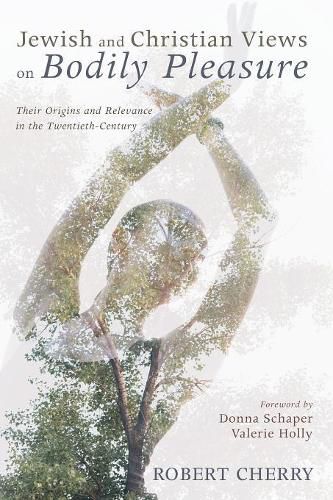Readings Newsletter
Become a Readings Member to make your shopping experience even easier.
Sign in or sign up for free!
You’re not far away from qualifying for FREE standard shipping within Australia
You’ve qualified for FREE standard shipping within Australia
The cart is loading…






This title is printed to order. This book may have been self-published. If so, we cannot guarantee the quality of the content. In the main most books will have gone through the editing process however some may not. We therefore suggest that you be aware of this before ordering this book. If in doubt check either the author or publisher’s details as we are unable to accept any returns unless they are faulty. Please contact us if you have any questions.
At the beginning of the Common Era, Jewish renewal movements, including Jesus’ ministry, had similar views: embracing moderate ascetic behavior. Over the next three centuries, however, they moved in opposite directions. Christianity came to firmly privilege anti-pleasure views and female lifelong virginity while the Babylonian Talmud strongly embraced positive views on bodily pleasures and female sexuality. The books most distinguishing feature is that it is the first time that one book contrasts in detail the evolution of Christian and Jewish ascetic beliefs. More than other books, it systematically presents the critical role played by Babylonian Jewry: how they became the center of world Jewry with the virtual extinction of the Palestinian community; their decisive rejection, more so than the Palestinian community, of any ascetic tendencies; and how they came to migrate to the European continent during the medieval period. It concludes by relating how the eighteenth-century Hasidic movement and the nineteenth-century Irish devotional movement reestablished the contrasting views that helps explain why Jewish immigrants and not Irish Catholics came to dominate twentieth-century vaudeville.
$9.00 standard shipping within Australia
FREE standard shipping within Australia for orders over $100.00
Express & International shipping calculated at checkout
This title is printed to order. This book may have been self-published. If so, we cannot guarantee the quality of the content. In the main most books will have gone through the editing process however some may not. We therefore suggest that you be aware of this before ordering this book. If in doubt check either the author or publisher’s details as we are unable to accept any returns unless they are faulty. Please contact us if you have any questions.
At the beginning of the Common Era, Jewish renewal movements, including Jesus’ ministry, had similar views: embracing moderate ascetic behavior. Over the next three centuries, however, they moved in opposite directions. Christianity came to firmly privilege anti-pleasure views and female lifelong virginity while the Babylonian Talmud strongly embraced positive views on bodily pleasures and female sexuality. The books most distinguishing feature is that it is the first time that one book contrasts in detail the evolution of Christian and Jewish ascetic beliefs. More than other books, it systematically presents the critical role played by Babylonian Jewry: how they became the center of world Jewry with the virtual extinction of the Palestinian community; their decisive rejection, more so than the Palestinian community, of any ascetic tendencies; and how they came to migrate to the European continent during the medieval period. It concludes by relating how the eighteenth-century Hasidic movement and the nineteenth-century Irish devotional movement reestablished the contrasting views that helps explain why Jewish immigrants and not Irish Catholics came to dominate twentieth-century vaudeville.